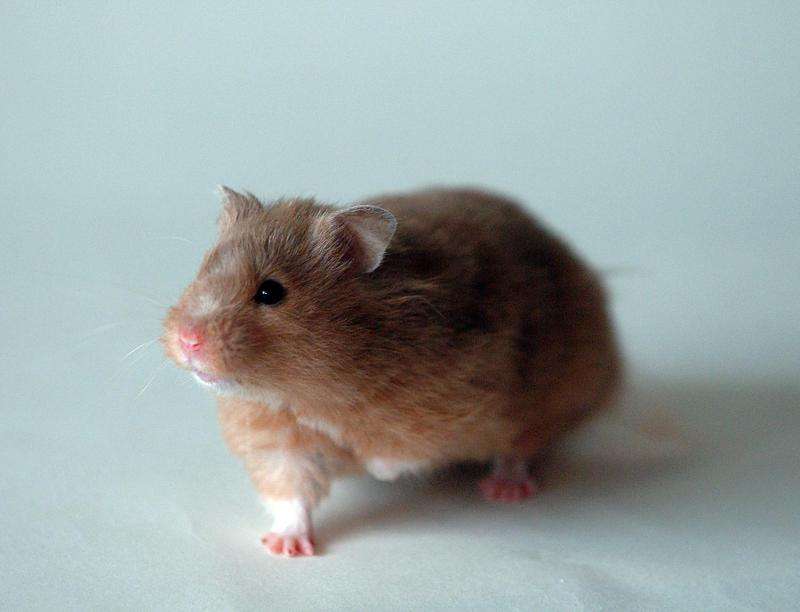The golden hamster or Syrian hamster (Mesocricetus auratus). Credit: Wikipedia
Syrian hamsters are golden-haired rodents often kept as house pets. Cold and darkness can cause the animals to hibernate for 3-4 days at a time, interspersed with short periods of activity. Surprisingly, the hibernation spurts of these cute, furry creatures could hold clues to better treatments for Alzheimer's disease (AD), according to a recent study in ACS' Journal of Proteome Research.
When hamsters and other small mammals hibernate, their brains undergo structural and metabolic changes to help neurons survive low temperatures. A key event in this process appears to be the phosphorylation of a protein called tau, which has been implicated in AD. In the brains of hibernating animals, phosphorylated tau can form tangled structures similar to those seen in AD patients. However, the structures disappear and tau phosphorylation is rapidly and fully reversed when the hibernating animal wakes up. Coral Barbas and colleagues wondered if determining how hibernating hamsters' brains clear out the tangled proteins could suggest new therapies for AD.
So the researchers used mass spectrometry to analyze metabolic changes in Syrian hamster brain before (control), during and after hibernation. A total of 337 compounds changed during hibernation, including specific amino acids, endocannabinoids and brain cryoprotectants. In particular, a group of lipids called long-chain ceramides, which could help prevent oxidative damage to the brain, were highly elevated in hibernating animals compared with those that had recently woken up. The largest change for any metabolite—about 5-fold more in hibernating animals compared with control animals—was for phosphatidic acid, which is known to activate an enzyme that phosphorylates tau. The Syrian hamster is an excellent model to study substances that could help protect neurons, the researchers say.
More information: Carolina Gonzalez-Riano et al. Metabolomic Study of Hibernating Syrian Hamster Brains: In Search of Neuroprotective Agents, Journal of Proteome Research (2019). DOI: 10.1021/acs.jproteome.8b00816
Journal information: Journal of Proteome Research
Provided by American Chemical Society






















